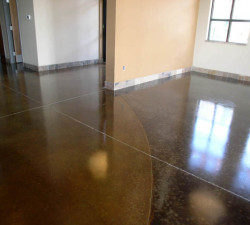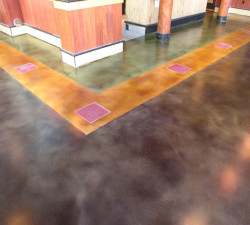Understanding The Different Types of Concrete Stain Products
Page top image size: 1000 x 500 px
Concrete staining is a great way to bring life to concrete or change up the look of an older and perhaps even dated or damaged floor. At Moon Decorative, we carry a variety of decorative concrete products, including acid stain, water based stain and acrylic stain to help you with all of your DIY decorative concrete projects as well as to assist contractors with their projects.
When shopping for concrete stain, you will find there are actually a few different types of stain products. If you have not worked with stain for concrete in the past, you might not be familiar with these types and be unsure which product is right for the look you want to achieve.
Reactive Acid Stains
Reactive Acid Stains, such as Sedona Acid Stain, are designed to react with a concrete surface in a chemical manner. The result is a translucent, variegated color tone that somewhat resembles marble. True acid-based concrete stains feature metallic salts that will react with the lime content in the concrete. Once that chemical reaction has occurred, the stain will form a permanent bond and will not peel or chip. Acid stains require a residue cleanup and mopping after the stain has completely reacted. This wash down process removes the etched concrete and residue which impedes sealer adhesion and is a necessary step.
Nonreactive Water Based Stains
A different approach to concrete stain is a water borne epoxy-acrylic stain, such as the SS Rainbow Stain System. This type of concrete stain is nonreactive because it is not based on the use of a chemical reaction in order to impart color to the concrete. Nonreactive stains are more similar to paint or wood stain in that the pigment particles they contain are deposited directly into the pores of the concrete. This provides a much broader array of color options than with traditional acid stains. In addition, you may also find nonreactive stains easier to apply. The final result tends to be more opaque in nature than with the use of a reactive stain but can still provide a translucent effect if not applied too heavily.
Back to Blog

